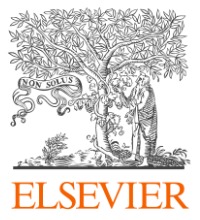Available online 19 March 2017
Highlights
- • Supercritical CO2 was applied to obtain extracts with high cannabinoids concentration.
- • Different operating conditions and regimes were evaluated.
- • Cannabinoids composition was analyzed with time at different extraction conditions.
- • Co-solvent pulse regime is the most recommendable extraction strategy.
Abstract
 Cannabis sativa L. extracts with high concentration of Δ9-tetrahydrocannabinolic acid (THCA) and Δ9-tetrahydrocannabinol (THC) were obtained by supercritical carbon dioxide (CO2) extraction. The objective of this work was to investigate the cannabinoid concentration of the extracts, the overall process yield under different extraction conditions, and the effect of ethanol as co-solvent. Extraction experiments were carried out with multistage pressure increments and at constant pressure of 17, 24 and 34 MPa and 328 K with flow rate of 200 g/min of CO2. At 34 MPa apparent solubilities of extracts were determined for four different Cannabis sativa L. strains with variable cannabinoids initial content. Extraction yield was highly dependent on pressure and plant material starting composition. The use of ethanol as a co-solvent was investigated with two different approaches, i.e. constant co-solvent flow, and by applying pulses of ethanol at different times though the extraction procedure. The obtained extracts were fractionated in 3 separators in a cascade configuration of decreasing temperature and pressure. The cannabinoid composition of the extracts was determined with HPLC analysis. Process extraction efficiency as high as 92% was achieved.
Cannabis sativa L. extracts with high concentration of Δ9-tetrahydrocannabinolic acid (THCA) and Δ9-tetrahydrocannabinol (THC) were obtained by supercritical carbon dioxide (CO2) extraction. The objective of this work was to investigate the cannabinoid concentration of the extracts, the overall process yield under different extraction conditions, and the effect of ethanol as co-solvent. Extraction experiments were carried out with multistage pressure increments and at constant pressure of 17, 24 and 34 MPa and 328 K with flow rate of 200 g/min of CO2. At 34 MPa apparent solubilities of extracts were determined for four different Cannabis sativa L. strains with variable cannabinoids initial content. Extraction yield was highly dependent on pressure and plant material starting composition. The use of ethanol as a co-solvent was investigated with two different approaches, i.e. constant co-solvent flow, and by applying pulses of ethanol at different times though the extraction procedure. The obtained extracts were fractionated in 3 separators in a cascade configuration of decreasing temperature and pressure. The cannabinoid composition of the extracts was determined with HPLC analysis. Process extraction efficiency as high as 92% was achieved.
Keywords: Supercritical CO2 extraction, Cannabis sativa L., Cannabinoids, Co-solvent, Pulse regime
© 2017 Elsevier B.V. All rights reserved.
Corrected proofs are Articles in Press that contain the authors’ corrections. Final citation details, e.g., volume and/or issue number, publication year and page numbers, still need to be added and the text might change before final publication.
Although corrected proofs do not have all bibliographic details available yet, they can already be cited using the year of online publication and the DOI , as follows: author(s), article title, Publication (year), DOI. Please consult the journal’s reference style for the exact appearance of these elements, abbreviation of journal names and use of punctuation.
When the final article is assigned to volumes/issues of the Publication, the Article in Press version will be removed and the final version will appear in the associated published volumes/issues of the Publication. The date the article was first made available online will be carried over.



